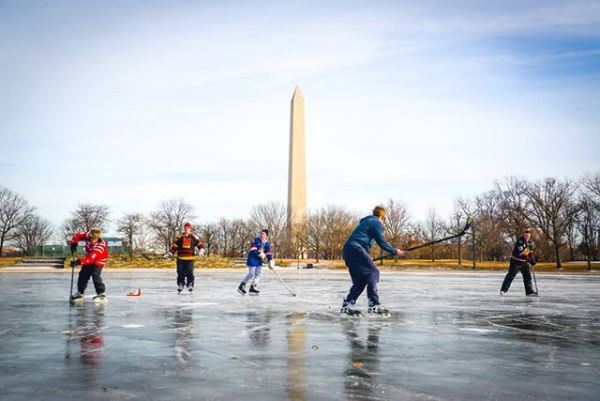Training Helps Avoid Winter Sports Injuries
Watching Olympic athletes zoom down the slopes or tear up the rink can inspire you to get involved in winter sports. But when you strap on skis or lace up skates, it is important to remember that you have not trained like an Olympian, and that an ounce of prevention can help avoid the pain of injuries later.

The Winter Olympics inspire people to try new sports they haven’t prepared for or don’t have the proper equipiment resulting in injuries like torn ACLs. (Photo: oneinpunch/Getty Images)
Dr. Jayson Loeffert, a primary care sports medicine physician at Penn State Health Milton S. Hershey Medical Center, said while it is good to see so many patients try new sports for the first time, these weekend warriors must keep in mind that they haven’t trained and conditioned their bodies the way that Olympic athletes have.
“The biggest issue we see are people who push too hard when trying something for the first time and it gets out of control,” Loeffert said. “You want to do it at a level you are comfortable with.”
According to Dr. Aman Dhawan, an orthopedic surgeon at Hershey Medical Center, wrist and ankle injuries are most common with skiers, as are torn anterior cruciate ligaments, or ACLs, in the knees. Unfortunately ACL tears do not heal on their own and typically require surgery.
Hockey players often sustain shoulder injuries as they check each other against the boards or engage in contact face-offs. Dhawan said many of these shoulder injuries can be treated with rest, rehabilitation and a gradual return to play, although surgery may be required if symptoms continue.
If you want to land triple axels like Adam Rippon or Mirai Nagasu, be prepared to fall. A lot. Figure skaters are prone to wrist and back injuries, stress fractures in the foot or spine and ankle sprains.
Proper training will help cut down on injuries when starting any sport. Cardiovascular training can improve endurance, while strength training builds up the muscles around the bones and joints to help prevent injuries from happening or help the body recover faster if they do.
“Whether it’s a winter or summer sport, you should go into any athletic activity with some element of preparation,” cautioned Dhawan. “You’ll get more enjoyment from a performance standpoint, but it’s also really important for injury prevention as well.”

Ice hockey players should dress in layers, use the proper equipment and wear helmets to avoid injuries. (Photo: angel-beil/Instagram)
Loeffert said thoughtful attire can help as well, since winter athletes need to stay warm, yet maintain mobility during their sport. He recommends dressing in layers that are easy to add or remove as necessary. He also notes that although helmet use can prevent scalp lacerations and skull fractures, helmets can’t protect from concussions.
“That is a common misconception,” he said. “Many people believe their helmet will stop them from getting a concussion, but this just isn’t true. The brain still moves within the head, and this cannot be changed by using a helmet.”
Loeffert said using equipment appropriate for your skill level can also prevent injuries. “The skis they use in the Olympics are very long because that helps you go fast, but they are also harder to control,” he said. “If you’re not at that level, you’ll want a shorter ski that is easier to control.”
He said the majority of winter sports injuries are minor bumps and bruises that can be treated with ice, over-the-counter pain medicine and rest.
Article by Penn State Health Milton S. Hershey Medical Center

This article was written by the guest author listed at the end of the article.



